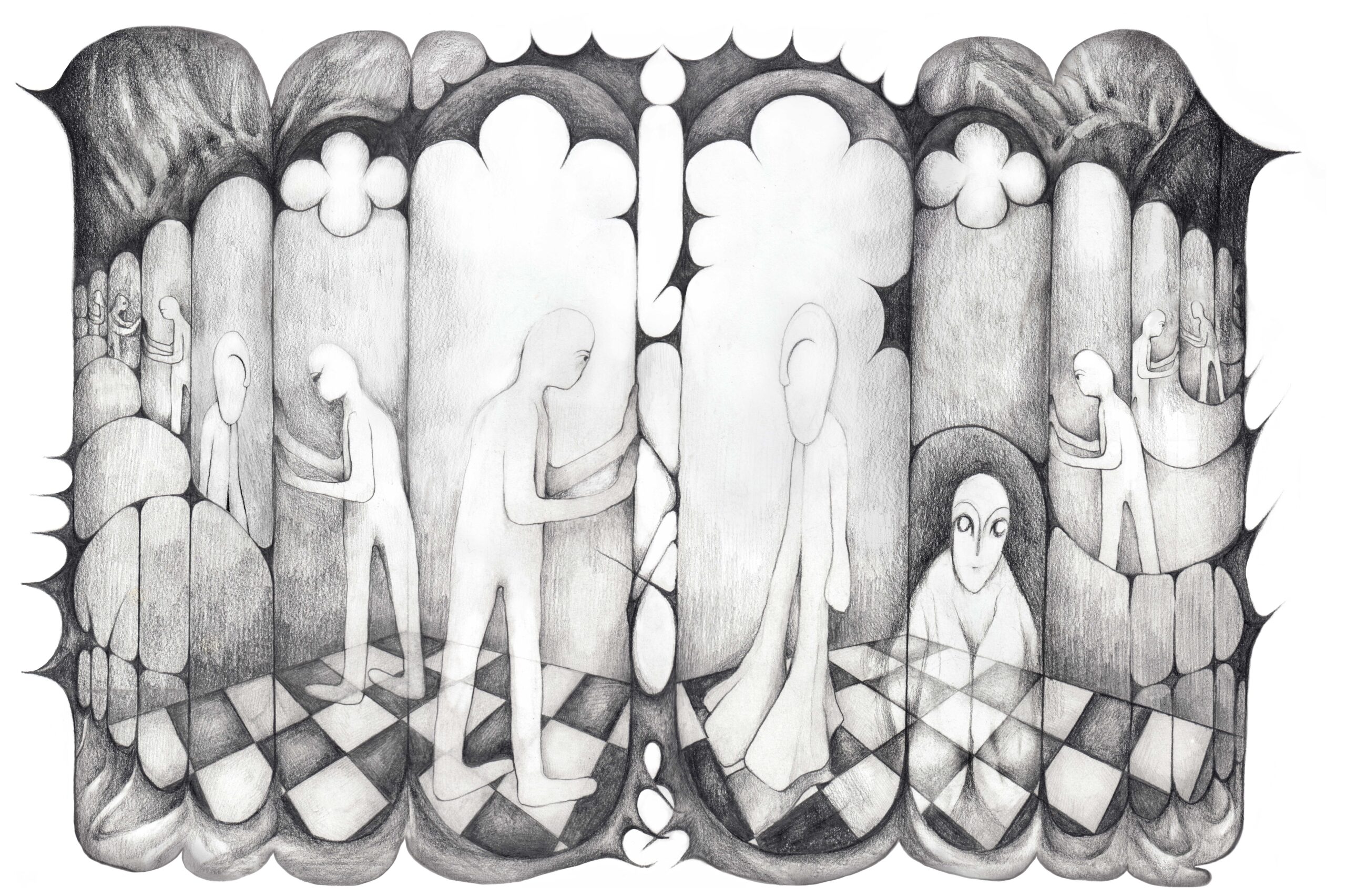The seventh issue of A Shade Colder takes a closer look at our many faces, around and within. The face is a marker of identity, supposedly one that helps others to recognise us throughout our lives, yet a face is subject to considerable change throughout a person’s life, and we all wear several. For better or worse, some of our faces are only revealed in private, while others are crafted for various public encounters.
The cover of this issue features a gallery of faces, created as part of Edith Karlson’s latest work to be exhibited at the 60th Venice Biennale. Ahead of the opening, Karlson was interviewed by Cecilia Alemani – they discuss her practice, often inspired by impulses hidden just beneath the surface. Johanna Hedva’s short story also looks at the more devious side of life and the joy and horror that placing yourself outside social norms evokes. The piece is illustrated by Pire Sova.
Mētra Saberova writes about putting on a different face quite literally, or developments in the art of drag in the Baltics. Drag as a craft was born in a very different context, yet it is now flourishing in the queer scenes of Estonia, Latvia and Lithuania. The faces we see at drag shows are often developed to empower the performers and their audiences, combat marginalisation, and for queer people to come together. Yet sometimes, people struggle with finding solidarity when the face of another is very different from theirs. The question of cultivating solidarity is addressed in the commentary section – art professionals share their experiences with what it means to nurture and show solidarity from within the art world. The relevance of politics in art is also discussed in an interview with artist Tai Shani by Lilian Hiob.
Alongside our regular events guide, this issue turns its gaze towards the Southern region of Estonia – Kaarin Kivirähk takes a deeper look at art outside the capital, as 2024 marks the year Tartu, the second largest city in Estonia, located in the south of the country, bears the title of European Capital of Culture. We also introduce two artists with a strong connection to Tartu. First being Jevgeni Zolotko, an artist whose unique practice and voice is explored in an interview by Anti Saar. And secondly, Ülo Sooster, a notable surrealist and abstract artist, originally from Tartu, but imprisoned and deported by the Soviet regime in the 1940s. Later, he made a life for himself among Moscow dissident artists, and Elnara Taidre introduces his legacy and questions of identity and belonging so relevant in the eastern part of Europe today. Showing a different face in late Soviet life, one where despite the drab everyday, people were dreaming big and actively working towards a more inspiring life, Triin Reidla writes about postmodern private houses, spectacular both visually and due to the context they were born in.
As A Shade Colder continues supporting Ukrainian art, we are glad to present a special edition of stickers by Lucy Ivanova and will also continue donating 50% of the proceeds of our sales to the Ukrainian Emergency Art Fund.
